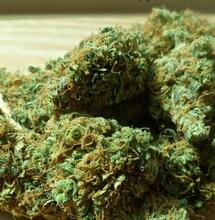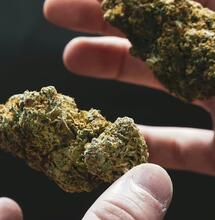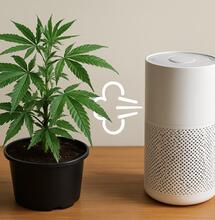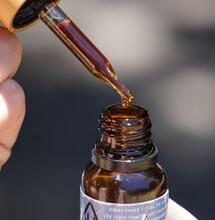Medical Cannabis and the Fight Against the Opioid Epidemic

Laws that regulate access to prescription drugs and which improve access to medical cannabis could help improve the state of opioid abuse.
The opioid epidemic, which has endured for decades now, has taken the lives of almost half a million Americans. People fall victim to overdose from opioids like prescription drugs and other drugs obtained from the black market. While the U.S. government has pushed some efforts to solve the crisis, it appears that not enough is done. Could a step toward legalizing medical cannabis under federal law prove as a turning point in this battle?
In recent years, medical cannabis has seen a wider acceptance among the American public. In fact, it has already grown into a lucrative industry, even attracting celebrities who launch new product lines, promising health and well being. On a more serious note, the more the public, as well as the scientific community, learn the know-hows on medical cannabis, the better it can be used to tackle the ongoing opioid crisis holistically.
The Reality of the Opioid Epidemic is Grim
It's a real tragedy that over half a million people have lost their lives due to an overdose in the last three decades. The Centers for Disease Control and Prevention (CDC) outlines the steady rise of opioid overdose deaths into three distinct waves. The first wave can be traced back to the 1990s and owes to the abuse of prescription opioids like methadone and semi-synthetic opioids.
Deaths from overdose have been on the rise since 1999 at the least, reports CDC. A subsequent wave started in 2010 when authorities observed a rapid increase in overdose deaths involving heroin. As of 2013, an array of new illicit drugs has stirred the third wave, when health authorities have been dazzled by the increased deaths owing to the use of illicitly made fentanyl.
A synthetic opioid billed to offer pain relief, fentanyl can treat severe types of pain, but it's up to 50-100 times stronger than morphine. The black market remains an obscure source of fentanyl, often being sold in combinations with other harmful substances such as heroin and cocaine. Besides significant human loss, the opioid epidemic is also taking a toll on economics.
With roughly 130 people dying from an opioid dose in the U.S. every day, opioid abuse is estimated to cost the U.S. budget almost 80bn a year. The figure encompasses costs like treating victims or court costs for convicts. On the other hand, there's also the imminent loss of a productive population. Many opioid abusers are young people or middle-aged people who can still contribute to society and who, if properly treated, can live a fulfilling life.
How Is the U.S. Tackling the Opioid Epidemic?
The Federal Government has so far used several different methodologies to tackle the opioid crisis. Authorities have worked to strengthen victim access to recovery programs and have promoted drugs that can combat their addiction or reverse an overdose. The government has also invested in surveillance methods designed to help authorities intervene accurately and develop new policies accordingly.
The government is also supporting research and education initiatives on opioid addiction and pain. As the opioid epidemic has impacted all U.S. states, state drug agencies and senior agency managers say that they treat prescription drug misuse at a high or of their agency's highest urgency.
Stats further suggest that about 40% of recorded deaths are due to prescription opioids. Legislation has been used to tackle this aspect of the problem, with recently introduced laws attempting to regulate and control prescription and drug use.
For instance, New Jersey introduced a law in 2017 that reduced the number of opioids available for patients per month. The law forced patients on prescription drugs to visit their physicians more frequently. This way, physicians can better evaluate patients' condition and monitor how they react to prescribed medications.
The state's law is further designed to help opiate addicts to obtain help as soon as they need it, having costs helped by insurance. A study that has looked at the death rates caused by overdose from opioids asserts that states with decent opioid control legislation had about 25% fewer deaths. What's also intriguing is that states with medical cannabis laws have also experienced a drop in opioid prescriptions. But critics say current efforts are insufficient towards addressing the opioid crisis at the core.
Is Medical Cannabis a Part of the Answer to Address the U.S. Opioid Crisis?
The issue of opioid addiction is often the direct result when a person who suffers from chronic pain is prescribed opioids to treat their condition. However, there's hope in medical cannabis, which can be used as a pain relief alternative medicine and can help people who suffer from chronic pain avoid opioid use and eventually addiction. At present, the U.S. use of medical cannabis is mostly for pain, although doctors commonly prescribe it for other conditions such as anorexia, nausea, or seizures.
The demand for medical cannabis for treating chronic pain is continually growing, as those who suffer are looking for pain relief medicine other than opioids. A recent study revealed that roughly 65% of individuals who use medical cannabis do so to treat chronic pain. Overall, approximately 2.1 million Americans are reported to use medical cannabis. A reduction in opioid prescription and use has been observed in states that have stepped to legalize medical cannabis.
A survey has been carried out in 19 U.S. states to compare opioid prescriptions in the year before cannabis has been made legal, and the year following legalization was introduced. According to sources, the most significant reduction of opioid prescriptions has been observed in Ohio, where medical cannabis was legalized in 2016. In this U.S. state, the rate of the prescribed drugs reportedly fell from 82.7% to 63.5%, which is a 19.2% difference. In at least four other states, opioid prescriptions dropped by 15%.
Such numbers indicate that alternatives to opioids such as medical cannabis can successfully help tackle the opioid epidemic. Law enforcement that controls access to prescription drugs and which improves access to medical cannabis may help improve the state of opioid abuse.

But Is the Legalization of Medical Cannabis Enough? We Also Need More Research.
A majority of states have legalized medical cannabis in recent years. However, at the federal level, the plant and any products derived from it remain illegal. Voting for the MORE Act to de-schedule cannabis as an illicit drug classified alongside substances such as heroin may open a pathway for federal legalization.
Several other bills wait in the House to be reviewed, supposedly promising a brighter future for the use of cannabis. For now, patients suffering from chronic pain can be helped within the limits of the law. There are states that allow medical cannabis use only for conditions such as epilepsy, so obtaining medical cannabis for any other condition is not possible under the law in those states.
As expected, the expansion of legalized medical cannabis in dozens of U.S. states has fueled debates among health experts and practitioners. Their opinions on using medical cannabis for treating various health conditions, including chronic pain, remain divided. Notably, valuable data from the pharmacy industry has been left out of legislative discussions as well as regulation shaping concerning medical cannabis, observers say. Inviting pharmacists to be part of such processes is rare, yet critical. Primarily because their profession enables them to identify potential setbacks such as contraindications and how cannabis reacts with other drugs - one of the questions on which the medical community continually comes with different finds and where more research is needed.
For instance, the results of one study, carried out in California, claims that 80% of medical cannabis patients reported that cannabis without opioids was sufficient for treating their condition, and over 90% said they would opt for cannabis over opioids.
However, another study that looked at big data, reportedly found that Americans who used cannabis were more likely than non-users to start using prescription opioids for non-medical purposes and develop some form of addiction three years later. There's a need for more funds to be allotted on medical cannabis research and whether it can effectively substitute use of prescription drugs.
Is There Anything We Can Learn from the Past?
The opioid epidemic probably is neither the first nor it will be the last public health crisis. The memories from the 1980s, when the AIDS crisis was at its full swing in the U.S., are not that distant. Critics have already noted that there has been much similarity to how the federal government has responded to the epidemic - "by doing next to nothing for many years." However, as this op-ed from New York Times adds, "An organized movement led in part by people with HIV and gay activists eventually forced Congress to create and fund new programs." Although slow to act, Congress eventually treated AIDS as a complex, multidimensional problem and tackled it by funding prevention, treatment, support services, and research.
Lawmakers provided money to make expensive antiretroviral drugs accessible to more people, and allocated money to help house people infected with HIV, recognizing that they needed more than just access to drugs," writes The New York Times. In October 2017, President Trump declared the opioid crisis a public health emergency. On one occasion, he had the epidemic described as a 'terrible menace'. "Ever since, the Trump Administration has applied an all-of-Government approach to the epidemic, taking an extraordinary range of actions that reflect the President's commitment to stopping the crisis in its tracks," reads a statement on the White House website.
However, in light of the opioid epidemic, the perception is that lawmakers have failed to provide critical support to tackle opioid addiction and that they fail to look back on how past crises have been solved. Congress has allotted some funds, however, the money made available are only a fraction of what's needed to systematically address the opioid epidemic, through long-term funding for prevention, addiction treatment, and also research - which would encompass research to what extent medical cannabis can help, too.
Hundreds of thousands have lost their lives due to opioid addiction, and it feels that we could have prevented many of those deaths. It's not the type of crisis that makes the world stop as did the COVID-19 turmoil, but it's one that burns in the background, has already caused pain to thousands of families who've lost a loved one, and continually presents to be an economic burden.
An effective alternative to opioids in the management of chronic pain can help manage the opioid epidemic. Medical cannabis has enormous potential to be that alternative. Medical cannabis, anyways, is the drug of choice of millions of Americans who suffer from pain and other conditions. And still we need the will of lawmakers to improve access to it and open the path for more medical research that could eventually help end the opioid crisis.
More on this topic from Soft Secrets:











